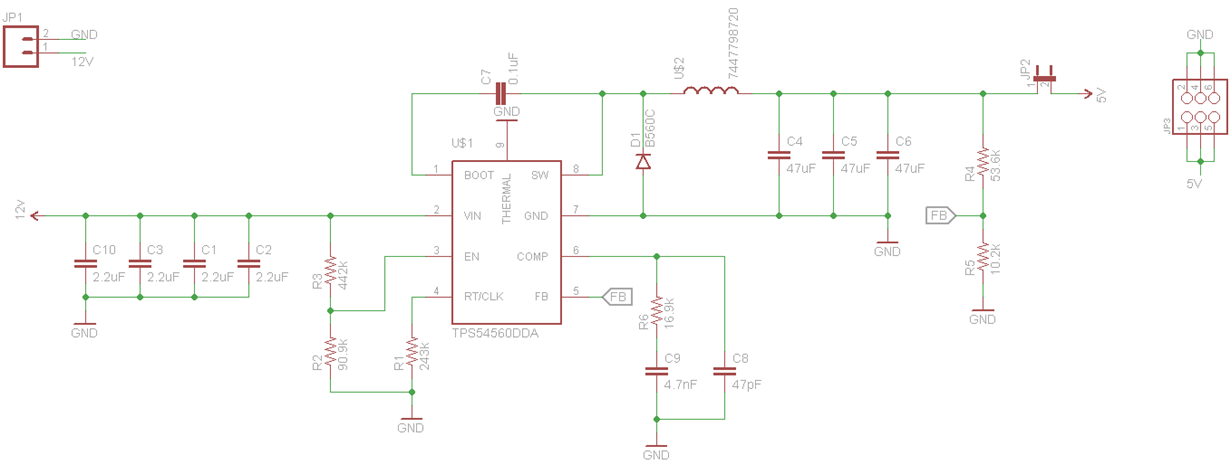Hello,
I designed a custom board with TPS54560 following the design example from the datasheet ( www.farnell.com/datasheets/1857574.pdf page 24). It's supposed to convert 12v to 5v.
So it works when I power a small LED, but when I plug some higher load, such as an LCD, the board starts making a strange sound and seems to kind of "reset" - can't maintain its high current.
I'd be very grateful if you can give me any hints on what I may have messed up, since I'm very noob in PCB design.
The sound is some high frequency "hiss", like white noise from an old tv, I think it may be coming from the inductor, but not sure. Even more this sound makes into my audio speakers somehow. I use a computer PSU to generate the 12V for the board, I guess from there it goes back to the mains plug, then into my PC - youtube - and out from the speakers :)
But when I power a small LED, instead of the high load LCD - no such sound happens.
I tried powering a dev board also, which takes 5v/2-3A - same thing. Just the LCD itself draws about 1A current, board ~2A - both together - ~3A I measure that using an onboard jumper.
So it starts, after ~1-2 seconds it kind of "resets" - power goes down and starts again. This is seen both on the ampermeter and heard from the sound. Also the LCD/board cannot properly power up.
Here are my schematics and board design. Schematic is the same as in the datasheet, just a current-measuring jumper added:
The inductor and diode are the ones suggested in the datasheet.
A few notes:
- I couldn't find the exact resistor and capacitor values for all of them, so sometimes I used approximate values to those shown on schematic. This results in ~5.25V output
- the thermal pad on TPS54550 is not soldered, just touching it - is this a problem?
- first I tried with a homemade PCB, then I got a proper PCB from a fab house - same thing
- I'm not sure how wide/thick the traces should be, so now they are pretty much random. I made the main power traces wider though - they now match the width of the TPS54560 pads.
Can you give me any hints on what I may have messed up?
Thanks!





